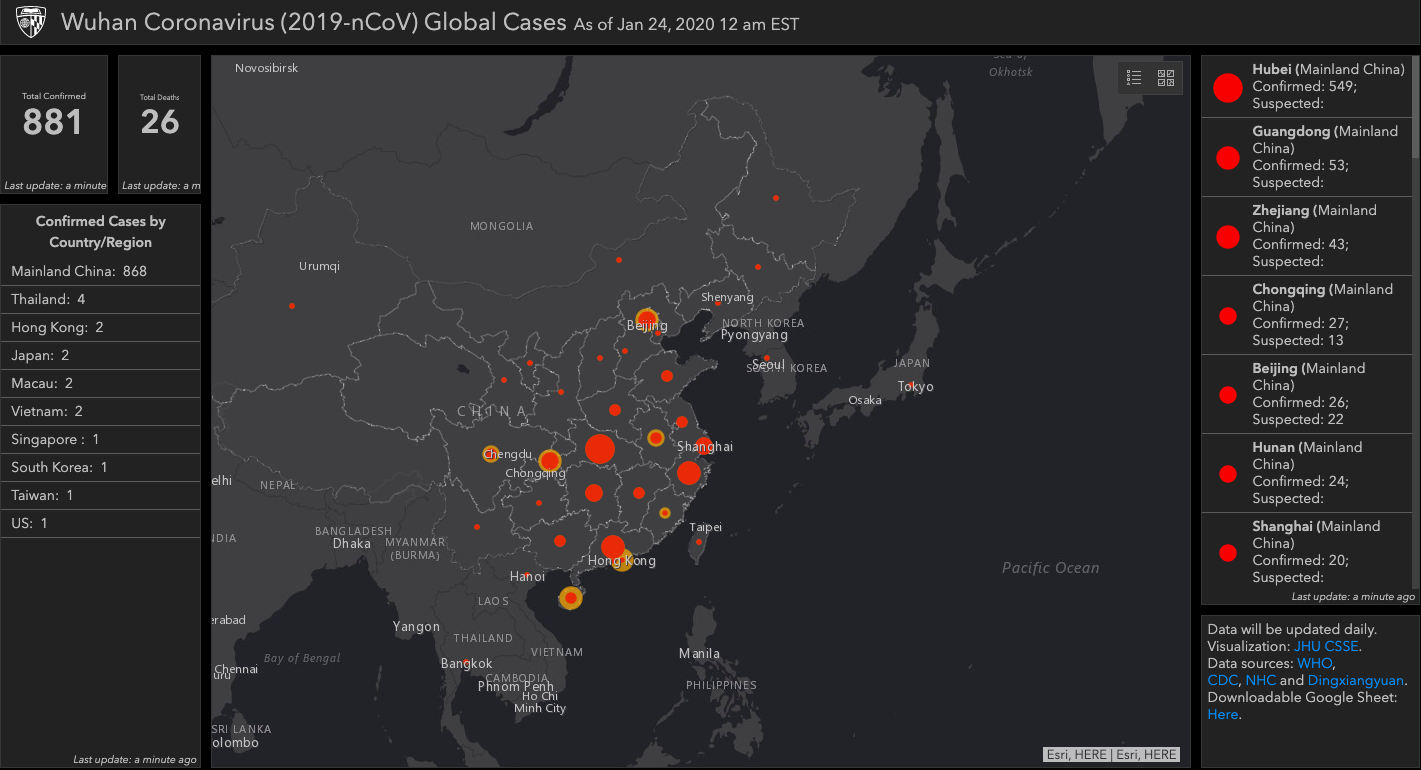Here's How MOH Is Handling The Influx Of Tourists As Wuhan Virus Scare Spreads In Malaysia
Four suspected cases of the Wuhan virus were reported in Sabah and Selangor.
On Thursday, 23 January, the National Crisis Preparedness and Response Centre (CPRC) received a report about four suspected cases of the mysterious Wuhan coronavirus in Selangor and Sabah
However, laboratory tests found all four of them to be negative for the Wuhan virus.
Earlier today, 24 January, the Ministry of Health (MOH) confirmed the test results, saying the patients were placed in isolation for treatment and further investigation.
Although, one of the patients, who showed symptoms of Influenza A, is said to be recovering and in stable condition, Health director-general Dr Noor Hisham Abdullah said in a statement.
As of today, 24 January, the Wuhan virus, officially named 2019-nCOV, has killed 26 people and infected more than 880 people globally
While the virus has spread outside the Chinese city of Wuhan including Hong Kong, Thailand, Japan, Singapore, South Korea, And The United States, 98.5% of those infected cases are in China.
The World Health Organisation (WHO), meanwhile, has issued a statement, saying that the outbreak currently did not constitute a Public Health Emergency of International Concern (PHEIC)
According to the statement sent to SAYS, the WHO said the members of its Emergency Committee thinks it is still "too early" to declare the outbreak a public health emergency of international concern (PHEIC).
The PHEIC label is a rare one. It is defined by the WHO as an extraordinary event and has only been used for the gravest epidemics such as the H1N1 in 2009 or swine flu from 2014 to 2016.
The Emergency Committee said that it is ready to be reconvened in approximately ten days' time, or earlier should WHO director-general Tedros Adhanom Ghebreyesus deem it necessary.
The UN health agency did advice that all countries should be prepared for containment, including active surveillance, early detection, isolation and case management, contact tracing and prevention of the onward spread of 2019-nCoV infection. It has also asked the countries to make full information available.
In Malaysia, though, the Ministry of Health has been on high alert
With the scare of the two negative cases in Sabah yesterday, it has now been made mandatory for airline crew members and visitors to undergo mandatory screenings upon arrival on international flights at the aerobridge before going for Immigration clearance at the Kota Kinabalu International Airport (KKIA).
The screening process at the KKIA has been taking place since 4 January.
Meanwhile, AirAsia and Malindo Air have cancelled flights to Wuhan with immediate effect.
In a travel advisory, AirAsia said all its flights from Kota Kinabalu to the Chinese city would be temporarily cancelled until 28 January, reported The Star.
Malindo Air, which flies to Wuhan Tianhe International Airport from KLIA, said they are suspending flights to Wuhan to ensure the safety, security, and comfort of air travel to its crew members and passengers.
Wisma Putra, too, has issued a statement, saying that the Malaysian Embassy in Beijing and other Diplomatic Missions have established emergency response team to reach out to Malaysians there
In terms of handling the influx of tourists, Health Minister Dzulkefly Ahmad listed down the measures being implemented by MOH
2. Triaging and containment at Health facilities
3. Hospital Referral and Admission
4. Investigation and patients treatment
5. Contact tracing
6. Optimum Infection, Prevention, and Control at all levels
The Health Minister shared the above measures after being asked on Twitter what steps the country was taking to ensure that visitors from China going through proper check.




